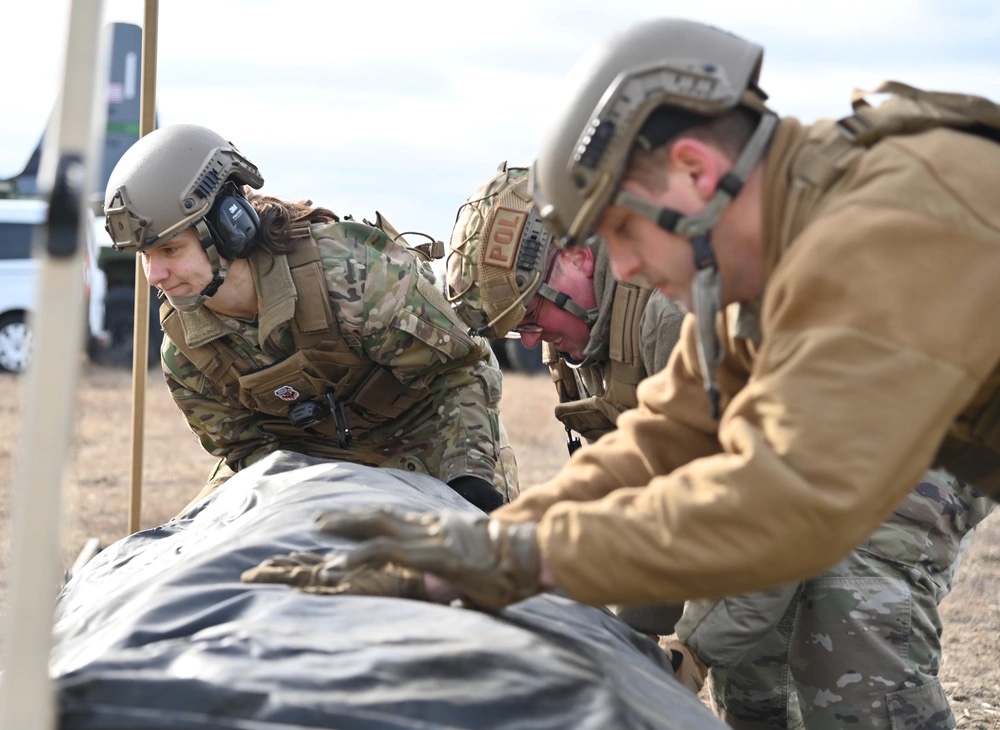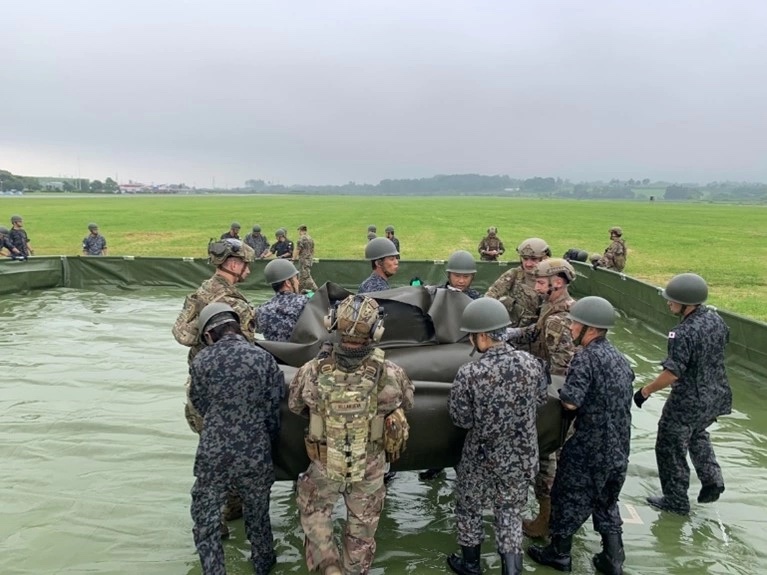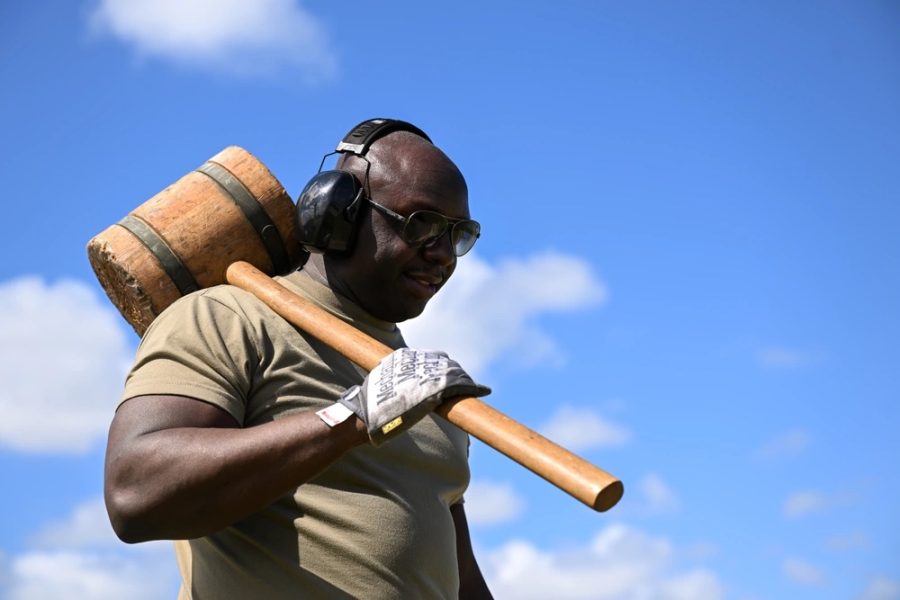As Air Mobility Command boss Gen. Mike Minihan assessed a recent major exercise in the Pacific, one clear lesson came through: the importance of the Global Air Mobility Support System (GAMSS), the network of Airmen who run airfields and move cargo for transport, refueling, and aeromedical evacuation operations down range.
“The Global Air Mobility Support System is the secret and the magic that will ultimately define our tempo,” Minihan told Air & Space Forces Magazine. “Quite frankly, what is aspirational to others, they do on a daily basis.”
But the general wants to take GAMSS “to the next level” by boosting their ability to operate without the support and security they are used to, by fine-tuning the command and control elements overseeing GAMSS, and by pushing them to act in small, independent teams.
What Is GAMSS
The GAMSS is made up of two elements: air mobility operations and contingency response. The 521st Air Mobility Operations Wing headquartered at Ramstein Air Base, Germany, and the 515th AMOW stationed at Joint Base Pearl Harbor-Hickam, Hawaii, serve as regional hubs for mobility aircraft passing through on the way to operations further afield.
In contrast, contingency response (CR) groups act like bite-sized air bases, with enough maintainers, aerial porters, security forces, communication specialists, and other career fields to open up a small airfield for mobility business.
“If it’s somewhere new, then likely CR goes in first and that can be backfilled or augmented by AMOW forces,” one anonymous Air Force officer with experience in GAMSS told Air & Space Forces Magazine.

The officer acknowledged that in a conflict, AMOW units would likely be swamped at their fixed hubs moving troops and supplies to the operating location. Even so, AMOW Airmen practice picking up and moving elsewhere in line with Agile Combat Employment, the concept in which Airmen disperse from sprawling air bases and predictable routes that can be easily targeted by adversaries.
SOF-like
In preparing for ACE, Minihan wants his contingency response and air mobility operations teams to be more flexible and more prepared for combat than they are now.
“The way I’m describing it is I want the CR to be more SOF [special operations forces] and I want the AMOWs to be more CR,” Minihan said.
The general pointed to forward area refueling points as one example of a capability normally reserved for Air Force Special Operations Command that he wants CR to hone. Another is being able to carry out mission orders in small, independent groups. Minihan made an analogy to landing a C-130 while wearing night vision goggles, a qualification which many pilots pursued after Sept. 11, 2001.
“That used to be reserved for only special [qualifications] within a squadron or if you were in AFSOC,” he said. “Let’s not wait for the event to open up the capabilities that the entire force needs to have. Let’s take advantage of the time we have now.”

The anonymous officer with GAMSS experience said the direction to become more SOF-like was encouraging, as it could help contingency response prepare for adversaries “that can reach out and touch us.”
“We don’t want to make CR SOF, we want to make them more SOF-like where they are resourced appropriately, they are getting the training for these very high-threat environments that they need to survive and operate,” he said. “To be SOF-like means that they are able to shoot, move, and communicate more effectively on their own without a lot of oversight or overhead.”
Still, CR troops are not typically trigger-pullers, so the officer cautioned that if they are sent into high-threat environments, they would likely appreciate better situational awareness through tools such as small uncrewed aerial systems, which could also help move cargo or people between islands if needed.
Those investments may help the joint force, as CR forces operating out of isolated airfields in the Pacific could also help generate unmanned aerial vehicle sorties, Army troops positioning long-range fires, or other movements.
Command and Control
Coordinating operations over a vast area like the Pacific proved difficult during Mobility Guardian 2023, the massive exercise this summer where Minihan noticed shortcomings in unity of effort that sometimes led to aircraft being placed at greater risk than necessary. An Air Force Times article also found CR workload ramping up due to communication and coordination problems.
Minihan hopes to address that concern in part by connecting his troops with beyond line-of-sight communications, but another part of the picture is the mobility task force (MTF).
In an operation, a MTF acts like a forward-deployed air operations center that commands and controls the other components of the mobility mission, including GAMSS. During the 2021 withdrawal from Afghanistan, a group of CR Airmen known as Task Force 74 oversaw mobility operations across dispersed locations despite limited communications. In a similar way, an MTF performed well during Mobility Guardian 2023, Minihan said, but it could use some polish.
“We’ve got a bit of fine-tuning to do,” he said. “Like with everything you do that is new, most of it is just ensuring the entire force knows what their role is so that you eliminate as much confusion out there as possible.”


